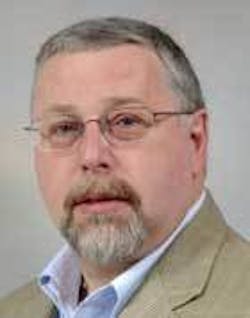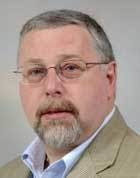The Chicken or the Egg with Thermo Fisher’s Gillyon
by Carlos David Mogollón
Laboratories for industrial facilities, or specializing in water and wastewater analysis for industrial clients, face greater pressure than ever as environmental awareness and technological advancements have translated to tougher standards over recent decades, whether for wastewater discharges or trace elemental analysis of process water to ensure consumer safety.
With over 30 years’ industry experience, Paul Gillyon, Global Product Group director for Trace Elemental Analysis at Thermo Fisher Scientific, has had a bird’s eye view. With $9 billion in annual sales, the company has 30,000 employees serving over 350,000 customers in pharmaceutical and biotech companies, hospitals and clinical diagnostic labs, universities, research institutions and government agencies, as well as environmental, industrial quality and process control settings.
Interviewed from London following his return from Pittcon 2007 in Chicago, Gillyon said the most dramatic shift occurred a decade ago when a technology called echelle grating allowed for simultaneous instead of sequential analysis of multiple elements in a sample. At the same time, greater analysis capabilities down to more minute detection levels also drove regulatory limits down as well.
“Obviously, one would hope the primary driver is the toxicology of whatever it is that we’re trying to detect,” he said. “But, of course, even if you establish relatively high toxicology, it’s pointless unless you can measure it at that level. Until you can measure it, it’s a bit of a moot point; so, there is this kind of chicken and egg relationship between what we would like to do in terms of assuring the environment vs. what is technically possible in terms of measurements.”
Gillyon, who joined Thermo Fisher two years ago after holding senior sales and marketing positions with U.S. and European-based competitors, currently has global responsibility for atomic absorption, inductively coupled plasma (ICP) optical analysis and ICP-mass spectrometry (ICP-MS) products and related services. The company also works with software for, among other things, data management - since labs in developed countries may deal with thousands of samples at a time. He notes the company is pushing to be a one-stop shop developing a total services approach for managing such analysis from the initial sample to regulatory report filings.
Click here to read "An Interview with Thermo Fisher Scientific's Paul Gillyon" in full in Q&A format.

